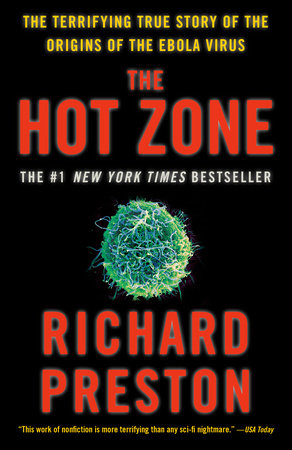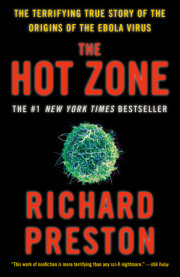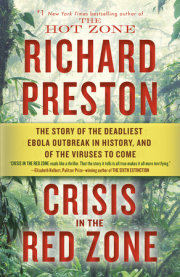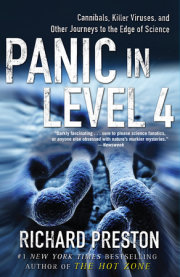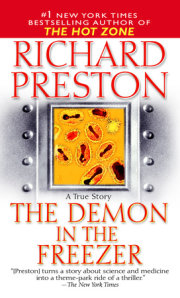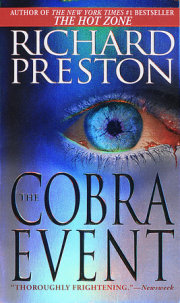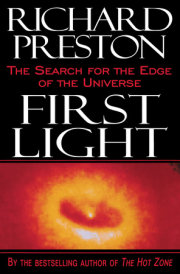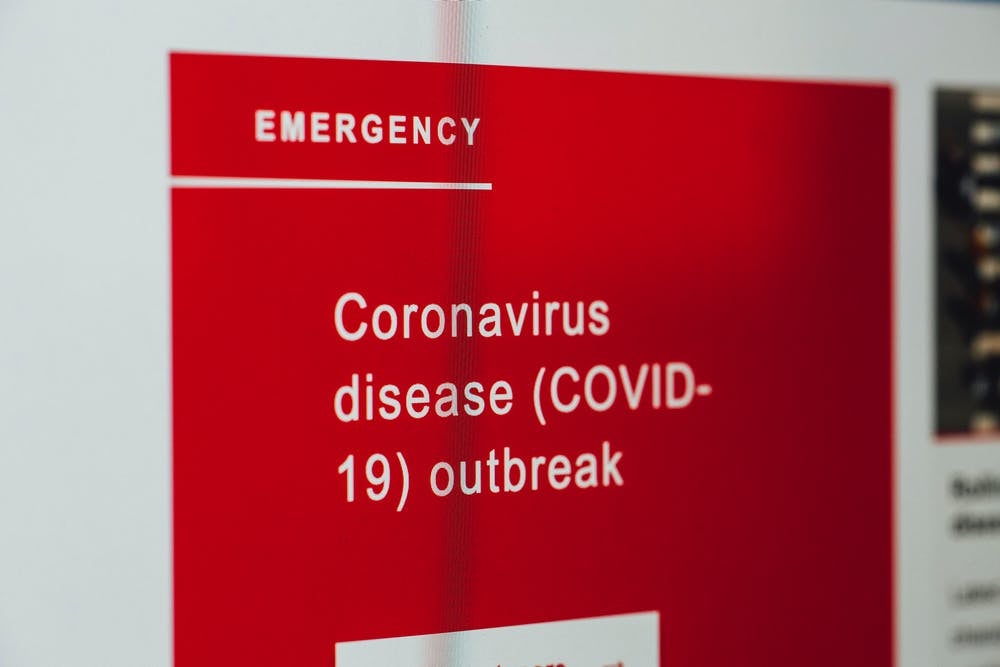The headache begins, typically, on the seventh day after exposure to the agent. On the seventh day after his New Year’s visit to Kitum cave-January 8, 1980-Monet felt a throbbing pain behind his eyeballs. He decided to stay home from work and went to bed in his bungalow. The headache grew worse. His eyeballs ached, and then his temples began to ache, the pain seeming to circle around inside his head. It would not go away with aspirin, and then he got a severe backache. His housekeeper, Johnnie, was still on her Christmas vacation, and he had recently hired a temporary housekeeper. She tried to take care of him, but she really didn’t know what to do. Then, on the third day after his headache started, he became nauseated, spiked a fever, and began to vomit. His vomiting grew intense and turned into dry heaves. At the same time, he became strangely passive. His face lost all appearance of life and set itself into an expressionless mask, with the eyeballs fixed, paralytic, and staring. The eyelids were slightly droopy, which gave him a peculiar appearance, as if his eyes were popping out of his head and half closed at the same time. The eyeballs themselves seemed almost frozen in their sockets, and they turned bright red. The skin of his face turned yellowish, with a brilliant starlike red speckles. He began to look like a zombie. His appearance frightened the temporary housekeeper. She didn’t understand the transformation in this man. His personality changed. He became sullen, resentful, angry, and his memory seemed to be blown away. He was not delirious. He could answer questions, although he didn’t seem to know exactly where he was.
When Monet failed to show up for work, his colleagues began to wonder about him, and eventually they went to his bungalow to see if he was all right. The black-and-white crow sat on the roof and watched them as they went inside. They looked at Monet and decided that he needed to get to a hospital. Since he was very unwell and no longer able to drive a car, one of his co-workers drove him to a private hospital in the city of Kisumu, on the shore of Lake Victoria. The doctors at the hospital examined Monet, and could not come up with any explanation for what had happened to his eyes or his face or his mind. Thinking that he might have some kind of bacterial infection, they gave him injections of antibiotics, but the antibiotics had no effect on his illness.
The doctors thought he should go to Nairobi Hospital, which is the best private hospital in East Africa. The telephone system hardly worked, and it did not seem worth the effort to call any doctors to tell them that he was coming. He could still walk, and he seemed able to travel by himself. He had money; he understood he had to get to Nairobi. They put him in a taxi to the airport, and he boarded a Kenya Airways flight.
A hot virus from the rain forest lives within a twenty-four hour plane flight from every city on earth. All of the earth’s cities are connected by a web of airline routes. The web is a network. Once a virus hits the net, it can shoot anywhere in a day æParis, Tokyo, New York, Los Angeles, wherever planes fly. Charles Monet and the life form inside him had entered the net.
The plane was a Fokker Friendship with propellers, a commuter aircraft that seats thirty-five people. It started its engines and took off over Lake Victoria, blue and sparkling, dotted with the dugout canoes of fishermen. The Friendship turned and banked eastward, climbing over green hills quilted with tea plantations and small farms. The commuter flights that drone across Africa are often jammed with people, and this flight was probably full. The plane climbed over belts of forest and clusters of round huts and villages with tin roofs. The land suddenly dropped away, going down in shelves and ravines, and changed in color from green to brown. The plane was crossing the Eastern rift valley. The passengers looked out the windows at the place where the human species was born. They say specks of huts clustered inside circles of thornbush, with cattle trails radiating from the huts. The propellers moaned, and the friendship passed through cloud streets, lines of puffy rift clouds, and began to bounce and sway. Monet became airsick.
The seats are narrow and jammed together on these commuter airplanes, and you notice everything that is happening inside the cabin. The cabin is tightly closed, and the air recirculates. If there are any smells in the air, you perceive them. You would not have been able to ignore the man who was getting sick. He hunches over in his seat. There is something wrong with him, but you can’t tell exactly what is happening.
He is holding an airsickness bag over his mouth. He coughs a deep cough and regurgitates something into the bag. The bag swells up. Perhaps he glances around, and then you see that his lips are smeared with something slippery and red, mixed with black specks, as if he has been chewing coffee grounds. His eyes are the color of rubies, and his face is an expressionless mass of bruises. The red spots, which a few days before had started out as starlike speckles, have expanded and merged into huge, spontaneous purple shadows: his whole head is turning black-and-blue. The muscles of his face droop. The connective tissue in his face is dissolving, and his face appears to hang from the underlying bone, as if the face is detaching itself from the skull. He opens his mouth and gasps into the bag, and the vomiting goes on endlessly. It will not stop, and he keeps bringing up liquid, long after his stomach should have been empty. The airsickness bag fills up to the brim with a substance know as the vomito negro, or the black vomit. The black vomit is not really black; it is a speckled liquid of two colors, black and red, a stew of tarry granules mixed with fresh red arterial blood. It is hemorrhage, and it smells like a slaughterhouse. The black vomit is loaded with virus. It is highly infective, lethally hot, a liquid that would scare the daylights out of a military biohazard specialist. The smell of the vomito negro fills the passenger cabin. The airsickness bag is brimming with black vomit, so Monet closes the bag and rolls up the top. The bag is bulging and softening threatening to leak, and he hands it to a flight attendant.
When a hot virus multiplies in a host, it can saturate the body with virus particles, from the brain to the skin. The military experts then say that the virus has undergone “extreme amplification.” This is not something like the common cold. By the time an extreme amplification peaks out, an eyedropper of the victim’s blood may contain a hundred million particles. In other words, the host is possessed by a life form that is attempting to convert the host into itself. The transformation is not entirely successful, however, and the end result is a great deal of liquefying flesh mixed with virus, a kind of biological accident. Extreme amplification has occurred in Monet, and the sign of it is the black vomit.
He appears to be holding himself rigid, as if any movement would rupture something inside him. His blood is clotting upæhis bloodstream is throwing clots, and the clots are lodging everywhere. His liver, kidneys, lungs, hands, feet, and head are becoming jammed with blood clots. In effect, he is having a stroke through the whole body. Clots are accumulating in his intestinal muscles, cutting off the blood supply to his intestines. The intestinal muscles are beginning to die, and the intestines are starting to go slack. He doesn’t seem to be fully aware of pain any longer because the blood clots lodged in his brain are cutting off blood flow. His personality is being wiped away by brain damage. This is called depersonalization, in which the liveliness and details of character seem to vanish. He is becoming an automaton. Tiny spots in his brain are liquefying. The higher functions of consciousness are winking out first, leaving the deeper parts of the brain stem (the primitive rat brain, the lizard brain) still alive and functioning. It could be said that the who of Charles Monet has already died while the what of Charles Monet continues to live.
The vomiting attack appears to have broken some blood vessels in his noseæhe gets a nosebleed. The blood comes from both nostrils, a shining, clotless, arterial liquid that drips over his teeth and chin. This blood keeps running, because the clotting factors have been used up. A flight attendant gives him some paper towels, which he uses to stop up his nose, but the blood still won’t coagulate, and the towels soak through.
When a man is ill in an airline seat next to you, you may not want to embarrass him by calling attention to the problem. You say to yourself that this man will be all right. Maybe he doesn’t travel well in airplanes. He is airsick, the poor man, and people do get nosebleeds in airplanes, the air is so dry and thin. . . and you ask him, weakly, if there is anything you can do to help. He does not answer, or he mumbles words you can’t understand, so you try to ignore it, but the flight seems to go on forever. Perhaps the flight attendants offer to help him. But victims of this type of hot virus have changes in behavior that can render them incapable of responding to an offer of help. They become hostile, and don’t want to be touched. They don’t want to speak.. They answer questions with grunts or monosyllables. They can’t seem to find words. They can tell you their name, but they can’t tell you the day of the week or explain what has happened to them.
Copyright © 1999 by Richard Preston. All rights reserved. No part of this excerpt may be reproduced or reprinted without permission in writing from the publisher.

